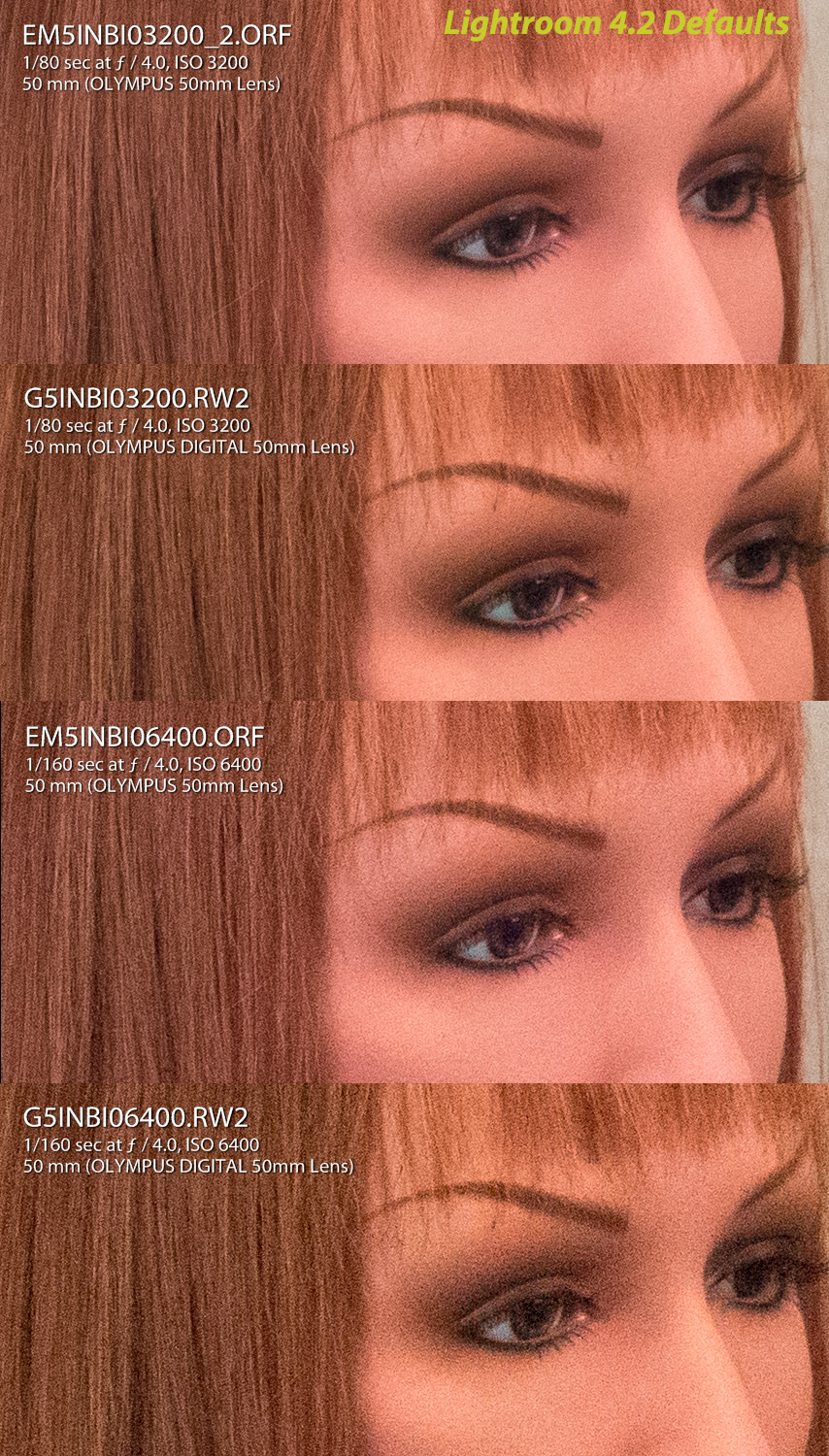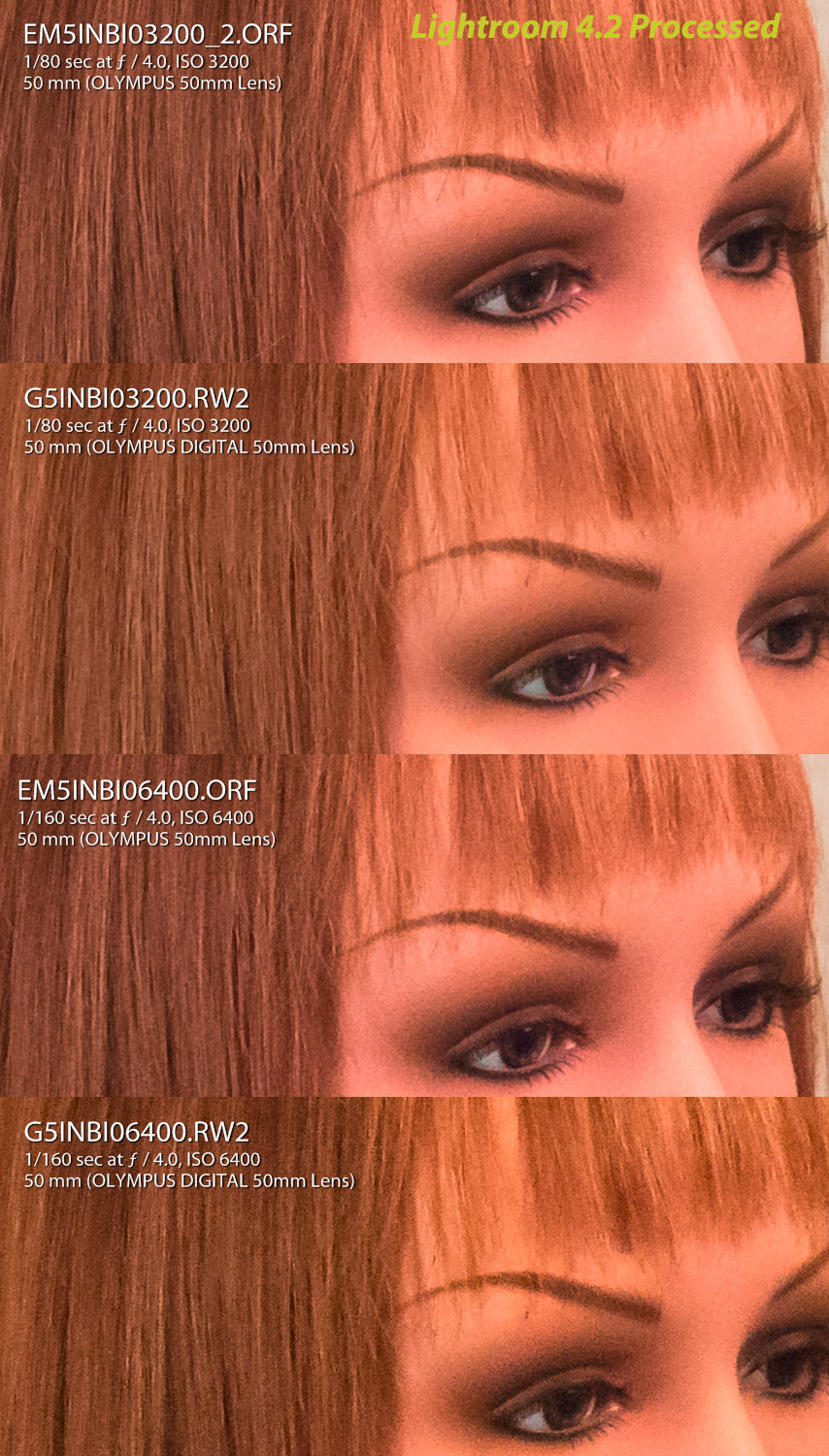*Warning* A recent lashing on DPReview has me convinced that I wrote a significant amount of crap in the first version of this article. I will update it as best I can.
Well, giants is probably a strong word. These things are tiny :-)
In my quest to decide whether or not to switch to u4/3, I have settled largely on the OM-D as the camera of choice. Lots of excellent features, fast AF, and in body stabilization that works really well. What’s not to like?
Well, video for one. It is probably quite good … but this is a Panasonic specialty … another is the quirky dome on top. Not too bad, but a bit ungainly and makes the camera larger that it needed to be. So yesterday I was poking around and noticed how small the G3 really was. Then I checked the G5 … it splits the difference. But both Panasonics are smaller than the Olympus. This I did not know …
Update: The E-M5 can shoot similarly to the G5 once you add the grip, but that is expensive. The E-M5 doubles(!) the cost of the G5 once you add the grip. And frankly, there is no way on God’s green earth that the E-M5 is that much better at anything … but, if you feel strongly about in-body stabilization (Olympus calls it IBIS) then you are probably going there anyway, despite the cost.
The key is that both have electronic view finders (EVF) and the G5 has a wonderful rear screen that has 30% more resolution than the Olympus and more than double its little sibling. The Panasonic screens are fully articulated, whereas the Olympus is only tilting.
Hmmm … things get interesting. The Panasonic of course can do decent video (not at the level of GH2 or GH3 but then, my standard is the ZS3 and this will blow that away with ease) … and because they use the AVCHD standard, they can record until the battery dies. The Olympus is still limited to shorter clips, and since I record a complete concert now and again, I like to have the option.
I also like the Panasonic lenses … and they make a great match for the bodies. The cameras know their own lenses and manage to insert specific instructions for lens correction into the RAW files, which Lightroom is able to understand. This is getting better and better …
So what is the downside? Well, I suppose that I would assume that the downside would be the high ISO performance. After all, the OM-D kind of spanks the G5 with the DXOMark tests.
*Update: Spanks is a really string word. At best, these numbers indicate that it “edges” the G5 out. For practical purposes, it’s not a huge difference, unless you shoot all day at that particular point in the edge cases.
I am pulling the rest as there is no point in trying to rescue the logic :-)
I’ll jump straight to the interesting part … the practical examples based on LR4.2 processing …
So let’s start with Lightroom 4.2 defaults for each of these images. Here is a set of crops. Click on it to expand to full size.
I don’t really see a two stop difference here … do you? What I see is that this new crop of 16MP sensors has incredible detail retention at these nosebleed ISOs. Wow …
So how do they look processed? Why, like JPEGs of course
If there is a difference that matters here, I really cannot see it. I prefer the way Panasonic colors respond. They remind me of the warmth of Nikon colors. Bot retain amazing amounts of detail, especially in the eyelashes. Both handle the shadows around the eyes just fine. Both take noise reduction very nicely.
So either camera can be your main workhorse, obviously.
So for completeness, let’s look at all four at web sizes …
E-M5 at 3200 ISO
G5 at 3200 ISO
E-M5 at 6400 iso
g5 at 6400 iso
Conclusion
These cameras are really amazing at high ISO





